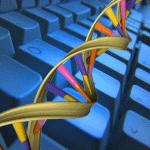Bioinformatics
|
29 october 2014 18:00:09 |
| Applications of the MapReduce programming framework to clinical big data analysis: current landscape and future trends (BioData Mining) |
|
Tweet The emergence of massive datasets in a clinical setting presents both challenges and opportunities in data storage and analysis. This so called `big data` challenges traditional analytic tools and will increasingly require novel solutions adapted from other fields. Advances in information and communication technology present the most viable solutions to big data analysis in terms of efficiency and scalability. It is vital those big data solutions are multithreaded and that data access approaches be precisely tailored to large volumes of semi-structured/unstructured data.The MapReduce programming framework uses two tasks common in functional programming: Map and Reduce. MapReduce is a new parallel processing framework and Hadoop is its open-source implementation on a single computing node or on clusters. Compared with existing parallel processing paradigms (e.g. grid computing and graphical processing unit (GPU)), MapReduce and Hadoop have two advantages: 1) fault-tolerant storage resulting in reliable data processing by replicating the computing tasks, and cloning the data chunks on different computing nodes across the computing cluster; 2) high-throughput data processing via a batch processing framework and the Hadoop distributed file system (HDFS). Data are stored in the HDFS and made available to the slave nodes for computation.In this paper, we review the existing applications of the MapReduce programming framework and its implementation platform Hadoop in clinical big data and related medical health informatics fields. The usage of MapReduce and Hadoop on a distributed system represents a significant advance in clinical big data processing and utilization, and opens up new opportunities in the emerging era of big data analytics. The objective of this paper is to summarize the state-of-the-art efforts in clinical big data analytics and highlight what might be needed to enhance the outcomes of clinical big data analytics tools. This paper is concluded by summarizing the potential usage of the MapReduce programming framework and Hadoop platform to process huge volumes of clinical data in medical health informatics related fields. |
| 55 viewsCategory: Bioinformatics |
 Correction: Environmental Statistics and Optimal Regulation (PLoS Computational Biology) Correction: Environmental Statistics and Optimal Regulation (PLoS Computational Biology)Correction: Systematic Evaluation of Methods for Integration of Transcriptomic Data into Constraint-Based Models of Metabolism (PLoS Computational Biology) 
|
| blog comments powered by Disqus |
MyJournals.org
The latest issues of all your favorite science journals on one page
The latest issues of all your favorite science journals on one page



